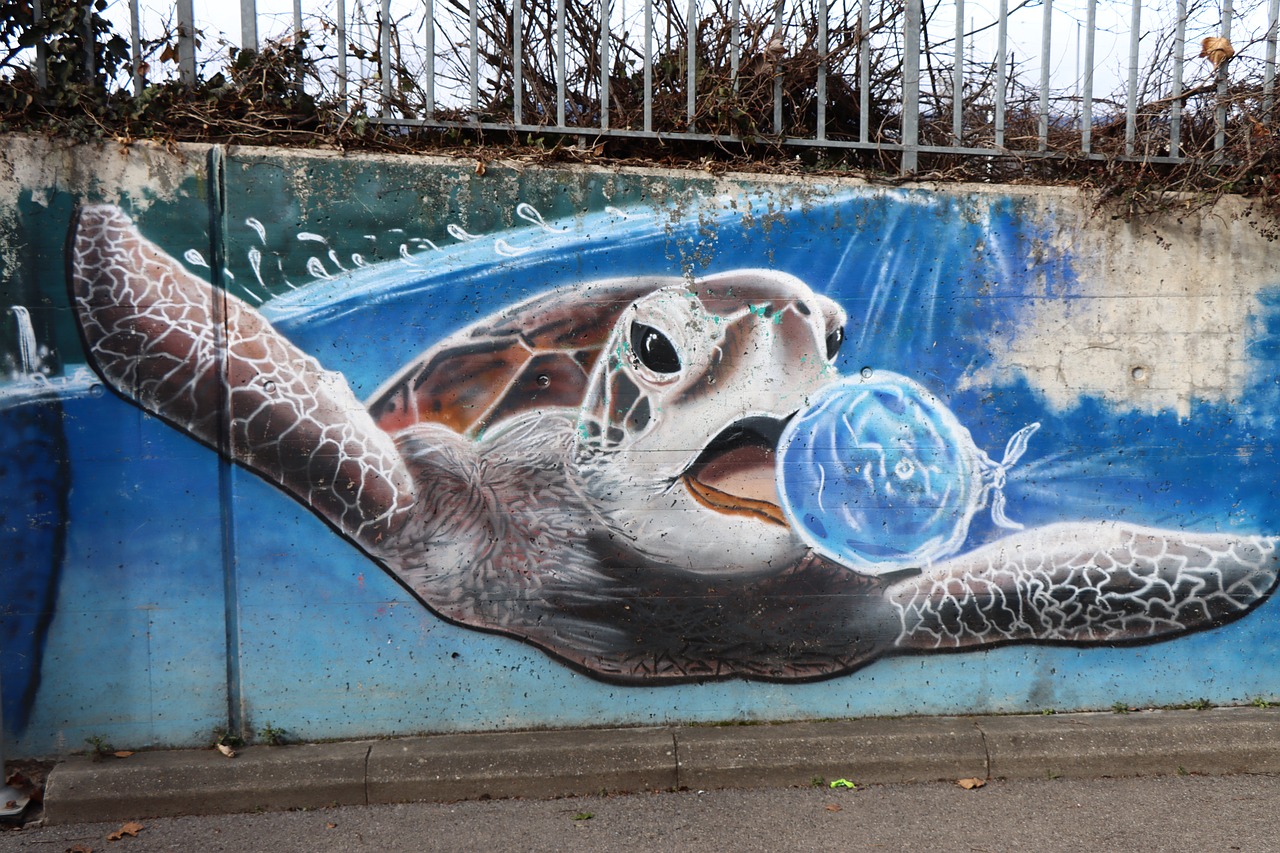Plastic is a ubiquitous hallmark of our modern society, and it has been even identified as a potential geological indicator for the Anthropocene. Unfortunately, despite the current solutions for remediation, plastic will continue to be emitted and accumulate in the environment for many decades to come. While it has been estimated the global marine plastic load between 15 and 51 trillion pieces, due to limitations in the detection, current plastic estimates are vastly underestimated. Furthermore, quantifying plastic load within organisms may be very difficult and it leads to severe underestimations.
Marine species pay the higher price for plastic dispersion.
From plankton to blue whales, plastic is thought to impact over 1200 marine species [1]. Though there is debate as to what extent plastics are causing harm to populations or ecosystems, there is growing evidence that the ingestion of plastic leads to long-lasting and diverse consequences for a wide array of fauna. Once ingested, large macro-plastics can be fragmented into smaller pieces, categorized as either micro- (1 μm-5 mm) or nanoplastics (<1 μm), through digestion and mechanical grinding. These tiny plastic fragments can be absorbed by the digestive tract, transported around the body via the bloodstream, and accumulate in tissues and organs. Plastics <20 μm can penetrate most organs, and plastics <10 μm are able to cross cell membranes, potentially damaging tissues and intracellular structures. Microscopic plastics can also cross both the blood-brain barrier and the placenta [1].
Laboratory studies examining plastic ingestion underline their negative impacts, including tissue damage, behavioural changes, reduced growth and fecundity, oxidative stress, altered metabolism and transgenerational fitness impacts.

Furthermore, laboratory studies have reported that exposure to plastics can cause inflammation of tissues. Even if previous laboratory studies have reported these important results, the need of a study on wild animals could lead to more reliable data. To reduce this gap, an Australian research group [1] examined the impact on scar formation and fibrosis, in Flesh-footed Shearwaters (Ardenna carneipes). This species is heavily impacted by plastic pollution, with ~90% of necropsied birds containing ingested plastics.
A new disease in marine birds: the “plasticosis”
The research highlights significant evidence for widespread plastic-related scar tissue formation in the proventriculus (part of birds’ stomach) of wild seabirds. A significant relationship between plastic presence, the severity of scar tissue formation, and prevalence of collagen within proventriculus tissue structures has been revealed. Scar tissue formation was clearly detected by analyses in nearly all samples that were assessed, raising greater concerns for the health of the overall shearwater population.
The scar tissue formation evident within the shearwater proventriculus tissues also highlights the unique pathological properties of plastic, as the damage was significantly linked to plastic ingestion, but not the ingestion of natural abrasive materials like pumice. This means a novel, plastic-induced fibrotic disease, that can be called ‘plasticosis’.t
The level of damage caused by one plastic piece may be affected by the morphologies of the plastic pieces themselves; one irregularly shaped, sharp item may have the potential to cause as much injury as numerous rounded, ‘softer’ plastic items. Additionally, the size and chemical composition of the plastics themselves may affect the prevalence of inflammation [1].

Moreover, like many other bird species, Flesh-footed Shearwaters ingest pumice, which is thought to aid in digestion. The research highlights that the amount of plastic and pumice are highly colinear, with individuals consuming large amounts of pumice also having a high prevalence of plastics in their stomach and gizzard. Probably adults birds are aware that they have something indigestible and they ingest pumice to release their stomach- Unfortunately, pumice could also exacerbate the situation and cause further damage, creating tiny plastic shards which could become embedded within tissues or be small enough to be absorbed and transferred to the bloodstream [1].
These results raise a great concern for all the wildlife, and they point out once again the importance of take action to safeguard the planet’s biodiversity.
[1] ‘Plasticosis’: Characterising macro- and microplastic-associated fibrosis in seabird tissues – Hayley S. Charlton-Howarda, Alexander L. Bondb, Jack Rivers-Autyc, Jennifer L. Lavers; Journal of Hazardous Materials 450 (2023) 131090.





